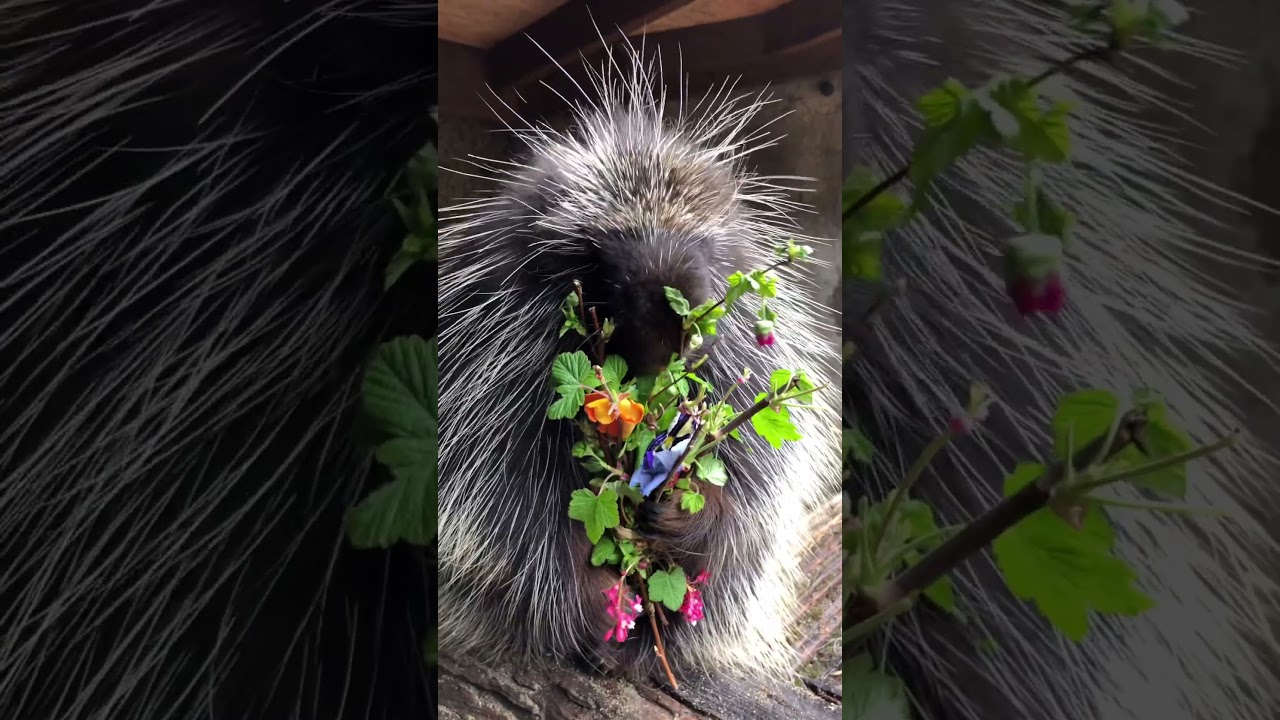– Insights into the behaviors and dietary preferences of porcupines during spring
– The ecological significance of porcupines in their natural habitats
– Zoo management strategies for replicating natural foraging behaviors
– Conservation efforts to protect porcupine populations and their environments
– Educational approaches to increase awareness and appreciation for porcupines
As spring unfurls its verdant beauty, many species awaken from their winter slumber, and the porcupine emerges as a fascinating creature to observe. Renowned for their distinctive quills, these rodents exhibit intriguing foraging behaviors, particularly when nibbling on the fresh edible offerings of the season.
Porcupines are predominantly herbivorous, and their diet encompasses a variety of plants, fruits, and bark. They often indulge in new plant growth, tender leaves, and buds in spring. This variety satisfies their nutritional needs and keeps their continuously growing incisors trimmed. Spring’s bounty brings about a noticeable shift in their feeding pattern, which often includes young shoots and the cambium layer found beneath the bark of trees. This dietary preference aids in germinating and dispersing seeds, underlining the porcupine’s ecological role as a seed disperser and a facilitator of forest regeneration.
The porcupine’s systematic approach to eating, as evidenced in videos showcasing these behaviors, reveals their capability for delicate and precise movements despite their cumbersome appearance. These feeding rituals highlight the porcupine’s crucial interaction with its environment, which can provide vital information for zoo management concerning captive porcupines’ enrichment and dietary needs. In a controlled setting, it is key to replicate these natural behaviors to promote physical and psychological health. This often involves creating edible arrangements that mimic the variety and texture of their wild diet, encouraging the same meticulous gnawing necessary to maintain their dental health.
Zoo management emphasizes the creation of enclosures that resemble a porcupine’s natural habitat as closely as possible. Habitat enrichment, such as the introduction of branches and plants that the animals can forage on, provides dietary benefits and intellectually stimulates the porcupines. Nutritionists and zookeepers work together to ensure that the diets of captive porcupines are diverse and balanced and mimic the composition of their wild counterparts.
Outside the confines of managed care, porcupine populations face threats from habitat destruction, hunting, and vehicular encounters. As a result, conservation efforts are paramount to ensuring their survival. Conservationists employ strategies such as protecting critical habitats, establishing wildlife corridors, and working with local communities to reduce human-porcupine conflict. Captive breeding programs may also play a role in preserving genetic diversity, especially for endangered species such as the Philippine porcupine and the North African crested porcupine.
Education is a powerful tool in the fight for wildlife conservation. By sharing knowledge about porcupines, their role in ecosystems, and their unique dietary habits—such as those illustrated in porcupine nibbles spring edible arrangement videos—educators can foster a deeper appreciation and understanding among the public. Interactive exhibits, educational programs, and multimedia presentations can all engage audiences and encourage stewardship of the natural world.
Undoubtedly, the porcupine is a remarkable creature. Through a combination of focused conservation efforts, informed zoo management, and educational outreach, we can ensure that future generations continue to enjoy the sight of these spiny mammals thriving in the wild and under human care. Understanding and respecting the intricate balance between porcupines and their habitat is key to their persistent existence and the health of ecosystems worldwide.
*****
Source Description
A spring edible arrangement for porcupine Thistle! 🌸


